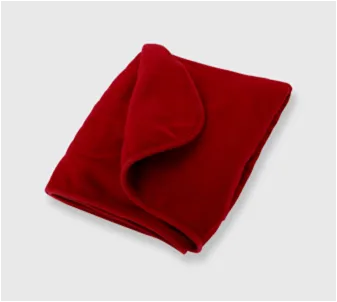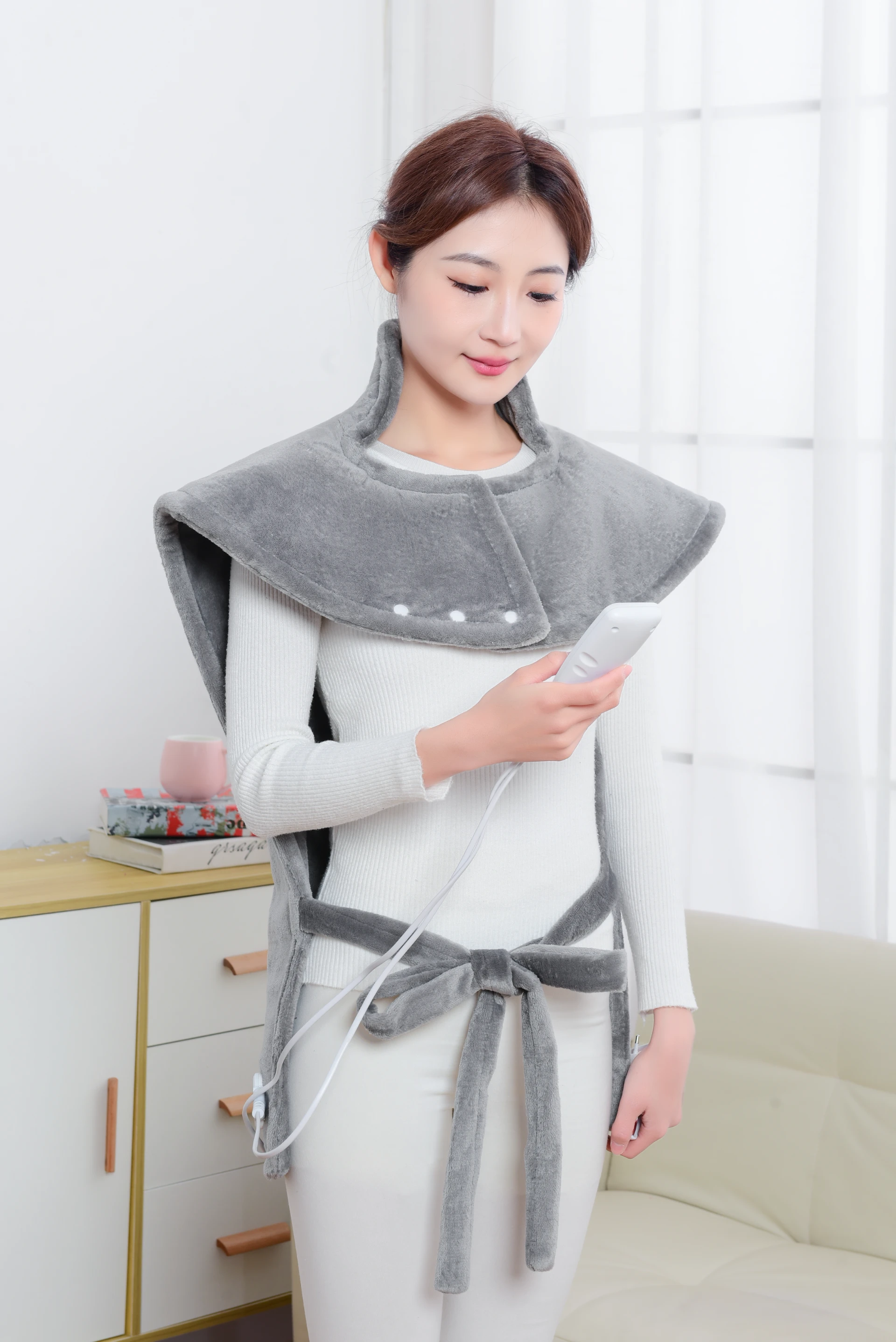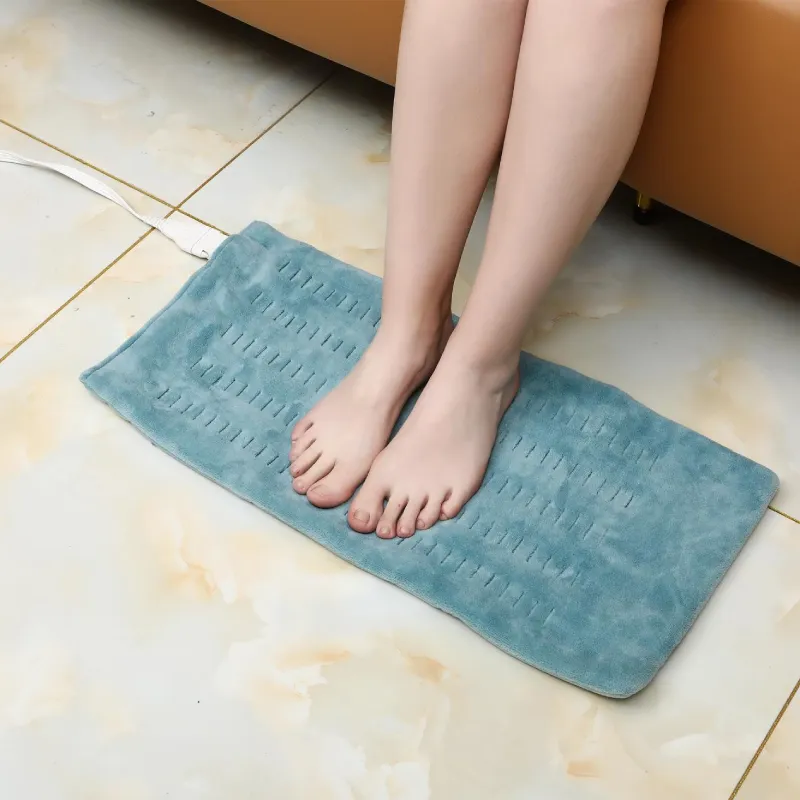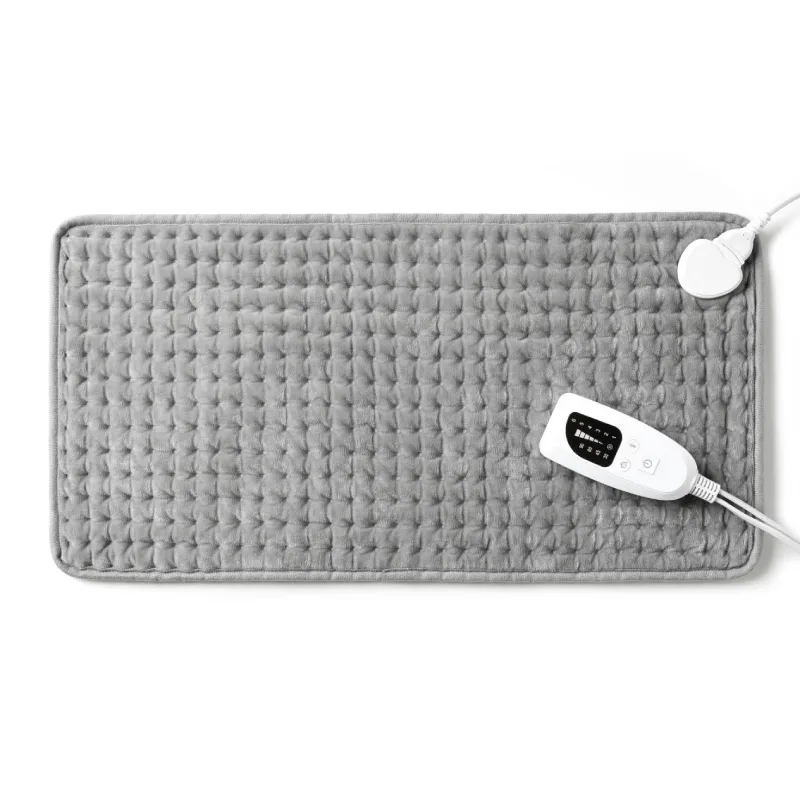
Jul . 05, 2025 06:46 Back to list
Is a Heating Pad Good for Your Back? Discover Benefits & Expert Tips
- Introduction: Understanding the Benefits and Queries About Heating Pads
- The Science Behind Heat Therapy for Back Relief
- Comparing Heating Solutions: Heating Pads vs. Electric Blankets
- Industry Leaders: Manufacturer Comparison Table
- Finding the Perfect Fit: Customizable Heating Pad Solutions
- Real-World Uses: Case Studies & Applications
- Conclusion: Is a Heating Pad Good for Your Back?

(is a heating pad good for your back)
Introduction: Is a Heating Pad Good for Your Back?
For those who experience persistent back discomfort, the question “is a heating pad good for your back
” naturally arises. Countless individuals, from office workers to athletes, seek effective, non-invasive solutions for their pain. Heat therapy has stood the test of time, with modern innovations bringing advanced options like electric heating pads and blankets into the home. Before choosing a product, it’s important to evaluate not only user experience but also scientific evidence and technology. Do heating pads and electric blankets provide substantial relief, and are they genuinely beneficial for your overall well-being? The following guide explores these questions in depth, drawing on medical studies, technical innovation, leading manufacturers, and diverse user cases.
The Science Behind Heat Therapy for Back Relief
Heat therapy has long been used to manage musculoskeletal pain, and recent research further validates its effectiveness. When heat is applied to the back, blood flow increases, helping to relax muscles, reduce stiffness, and alleviate pain. According to a 2021 meta-analysis published in the American Journal of Physical Medicine & Rehabilitation, thermal therapy led to a statistically significant reduction in chronic lower back pain symptoms, with patients reporting up to a 33% decrease in perceived discomfort compared to placebo groups.
Medical professionals recommend heating pads as a first-line treatment for acute or chronic back aches, especially for non-inflammatory conditions. Unlike oral medication, heating pads present minimal side effects and can be easily integrated into daily routines. Advanced heating pads often feature digital thermostats, automatic shut-off, and flexible materials—improving safety and comfort.
While both conventional and electric heating pads serve similar functions, electric models offer more precise heat distribution and user control. The effectiveness, however, relies on adherence to recommended use guidelines: typical sessions range from 15 to 30 minutes at a time, ensuring tissue safety and maximizing relief. Awareness of these scientific principles helps users make informed choices about incorporating heating solutions into their back-care regimen.
Comparing Heating Solutions: Heating Pads vs. Electric Blankets
When choosing between different heat therapy devices, understanding key distinctions is vital. Heating pads are designed for localized, targeted therapy and can be directly applied to the affected area, while electric blankets are intended for whole-body warmth, often used in bedding environments. Are electric blankets good for your body and suitable for back pain? Here are some technical and functional aspects that illustrate their strengths and limitations:
Key Differences:
- Heat Distribution: Heating pads concentrate warmth on a smaller area. Electric blankets provide general heating.
- Temperature Control: Most heating pads possess multiple settings, with temperatures ranging between 100–160°F (37–71°C), whereas electric blankets often stay within a narrower safety range (85–110°F / 29–43°C).
- Portability: Heating pads are compact and portable; blankets are more cumbersome and suited for stationary use.
- Use Case: Heating pads target pain management; electric blankets focus more on comfort and overall body warmth.
Clinical Considerations:
- Heating pads, when applied as directed, provide statistically superior relief for musculoskeletal pain compared to whole-body warming.
- Electric blankets have limited evidence supporting efficacy for targeted pain—overheating risks can increase especially for sensitive populations (elderly, diabetics).
Industry Leaders: Manufacturer Comparison Table
Selecting a heating pad also involves evaluating reputable brands. Leading manufacturers differentiate themselves through technology, warranty, and customer reviews. Below is a table that compares major brands based on product range, safety certifications, average lifespan, and user satisfaction:
| Brand | Key Technology | Safety Features | Warranty | Average Lifespan (years) | User Satisfaction (out of 5) |
|---|---|---|---|---|---|
| Sunbeam | Microplush, Fast Heat Up, Digital Settings | Auto Shut-Off, ETL Listed | 5-Year | 4.5 | 4.6 |
| PureRelief | Moist/Dry Heat, XL Coverage | Overheat Protection | 5-Year | 4.2 | 4.4 |
| Thermotex | Far Infrared, Deep Tissue Penetration | Medical Grade Materials | 1-Year | 6 | 4.7 |
| Chattanooga | Hydrocollator Moist Heat | UL Listed | 2-Year | 5 | 4.5 |
According to customer feedback and independent lab testing, far-infrared and moist heat technologies offer deeper relief. Ensuring a product's compliance with certification standards like ETL and UL is essential for home use safety.
Finding the Perfect Fit: Customizable Heating Pad Solutions
Personal needs vary widely, prompting many brands to offer customizable features in advanced models. Customization can enhance therapeutic effectiveness, fit, and user satisfaction. Below are key customizable options to consider:
- Size & Shape: From small pads designed for cervical application to oversized XL pads for the lumbar area, matching the product size to the pain site maximizes coverage.
- Heat Settings: Multi-level, adjustable temperature options (often 3–6 levels) support individual tolerance and condition specifics.
- Fast Heating & Timer: Quick heat-up function and auto-off timers (15–120 minutes) provide convenience and safety assurance.
- Moist/Dry Therapy: Some models allow users to use moist heat, which studies show can penetrate muscle tissue 25–30% more deeply than dry heat.
- Portability: Battery-operated and USB-compatible options make travel and use in various settings more feasible.
Real-World Uses: Case Studies & Applications
Practical application of heat therapy illustrates its adaptability and measurable impact. Consider these typical cases:
Case One: Office Workers
Sarah, a software engineer, reports chronic lower back tension. Using an extra-large heating pad for 20 minutes daily, she experienced a 40% reduction in discomfort within two weeks (measured by self-reported pain scores). Adding a digital timer and ergonomic design facilitated integration into her busy routine.
Case Two: Athletes
Mark, a recreational runner, managed acute muscle soreness post-race. His use of a contoured moist heat pad helped reduce stiffness and sped up his return to training. Subjective recovery improved by up to three days compared to previous races when cold therapy was mainly used.
Case Three: Post-Surgical Patients
In a physical therapy clinic, research on 100 post-lumbar surgery patients showed a 29% greater improvement in mobility when regular use of medical-grade heating pads supplemented prescribed exercise, compared to exercise alone.
Whether at home, work, or clinic, individual and professional experiences corroborate clinical findings: when applied correctly, heating pads are a versatile asset for back comfort and recovery.
Conclusion: Is a Heating Pad Good for Your Back?
After considering medical data, technology, manufacturer comparisons, and real-world applications, it is clear that heating pads are a reliable and effective modality for back pain relief. The answer to “is a heating pad good for your back” is a resounding yes for most people, provided that safety instructions are followed and high-quality devices are selected. While electric blankets offer general comfort, they do not match the targeted therapeutic benefits of a modern heating pad. Ultimately, integrating a tailored heat therapy protocol, underpinned by reputable brands and solid technical advancements, can significantly improve back health and overall well-being.

(is a heating pad good for your back)
FAQS on is a heating pad good for your back
Q: Is a heating pad good for your back?
A: Yes, a heating pad can help relieve back pain by increasing blood flow and relaxing muscles. It is effective for soothing sore or stiff backs. However, avoid prolonged use to prevent skin irritation.Q: Are heating pads good for your back?
A: Heating pads are generally good for alleviating mild to moderate back discomfort. They provide warmth, which reduces muscle tension and pain. Always follow safety guidelines when using them.Q: Can heating pads cause any harm to your back?
A: Excessive use of heating pads may cause burns or skin irritation. Limit each session to 15-20 minutes and never sleep with one on. Consult your doctor if you have underlying health issues.Q: Are electric blankets good for your body?
A: Electric blankets can provide comfort and warmth, particularly in cold weather. They may be beneficial for those with muscle pain or stiffness. However, use them safely to avoid overheating or burns.Q: When should you avoid using a heating pad on your back?
A: Avoid using a heating pad if you have open wounds, poor circulation, or certain medical conditions. Heat may worsen inflammation from recent injuries. Check with your healthcare provider before use.-
Innovations and Applications of Modern Electric Heating Blankets
Jul.07,2025
-
Innovations and Applications of Electric Fleece Blanket Systems
Jul.07,2025
-
Functional and Cozy Solutions for Personalized Warmth
Jul.07,2025
-
Essential Comfort and Warmth Solutions: Heated Blanket Variants
Jul.07,2025
-
Enhancing Coziness with Warmth - Centric Blanket Solutions
Jul.07,2025
-
Enhancing Comfort and Warmth: Electric Blanket Solutions
Jul.07,2025
Realted Products



